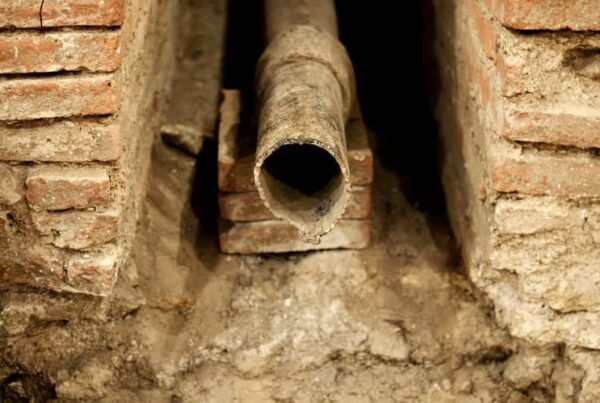
To caulk, or not to caulk, that is the question… Should we caulk around the toilet base?
BUT! …Before we jump into it, I am behind Reuben Saltzman, from Structure Tech Home Inspections that the toilet paper roll does indeed go overhand. Case Closed.
Should You Caulk Around A Toilet?
Honestly, it is recommended, but I would leave a tiny gap in the front and back. We will cover the pros and cons of both sides so you can make a decision for yourself.
Pros of Caulking Around Toilets
It’s Code
In the places I have found, it is building code to caulk around the base of the toilet.
Here’s an example from Florida Building Code:
Where fixtures come in contact with walls and floors, the contact area shall be water tight.
Florida Building Code, Residential 2017.
You can check your state to find what your code states. However, I would bet they are all about the same.
Side Note: Grout should not be used as a replacement of caulk. While grout can provide stability, it is not water tight.
It Looks Good
Having a nice line of caulk around the base of your toilet gives a pretty smooth look.
When not caulked, the base of the toilet can look uneven, especially with tile floors and spaces between grout lines.
Supposedly There Is A Smell Factor?
Honestly, I have never experienced this for myself, but it makes sense.
If the toilet base is not water tight, you leave room for water from mopping, or near miss streams to end up under the toilet. These areas can never be cleaned thoroughly.
It Helps Stabilize Your Throne
Caulking around the base can help secure your toilet to the floor. While you should have bolts to do this, sometimes they can become loose overtime.
In any regard, caulking gives an extra sense of security.
Cons of Caulking Around Toilets
Hidden Leaks
One of the biggest arguments against caulking around the base of the toilet is not finding potential leaks at the floor.
Some claim that this is just nonsense, since leaks typically only show in the basements or below the toilet. However, I do not 100% agree with this statement.
If there is a floor underneath the toilet, yes the leak will show at the ceiling under the toilet first. This is because water travels down, not out.
But, if there is no floor (story/basement) beneath the toilet, rather it is just concrete pad, where does the water go? The water will seep into the concrete and spread out, eventually making it’s way around the base of toilet.
This can happen too in other cases, if the leak is fast enough. Meaning, the floor cannot absorb the water at the rate it is leaking.
If you don’t believe me, just Google “toilet leaking at base.”
Some Examples
Often times, we find toilets leaking at the floor by examining the grout. Grout will become darker around the toilet if the toilet is leaking at the floor.
In another example, if you have vinyl flooring, the vinyl flooring may slowly begin to ripple, come up, or become stained.
A Happy Medium
At the same time, some contractors may recommend caulking around the base of the toilet, except at the back of the toilet so water can escape if there is a bigger leak.
So What Should You Do?
In my opinion, you should caulk around the entire edge of the toilet except at the front and the back. Just enough to leave a tiny gap so water can escape.
Just leaving a gap at the back of the toilet does not let you see the water leak. This is why I recommend leaving one at the front and the back.
This is the happy medium.
- You can notice a leak if the water spreads out faster than down.
- It prohibits mop or near-miss water from entering below the toilet.
- And it secures the toilet to the floor.
Class dismissed! – Just don’t forget, overhand not underhand. 🙂
If you have any questions, comment below! You can also check out our last blog on sediment traps!



